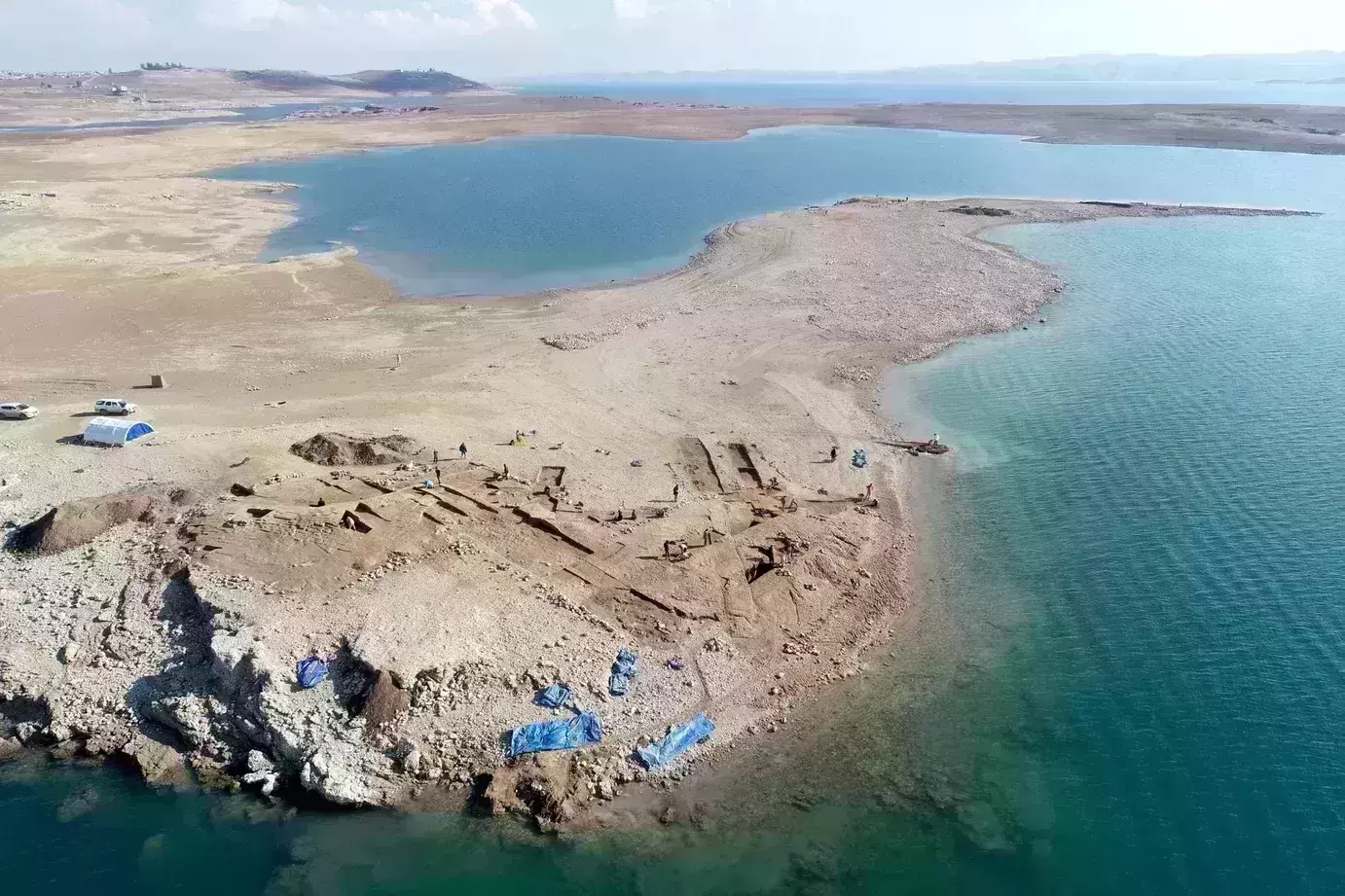
Drought uncovers ancient Iraqi city dating back to Bronze Age
text_fieldsAfter a reservoir in Iraq dried up due to drought, an ancient city dating back to the Bronze Age surfaced. Experts think the city found in the Kurdistan region of Kemune is about 3,400 years old.
This year's drought depleted the water levels in Iraq's largest reservoir, the Mosul Dam, on the Tigris River. The government had decided to relocate water from the dam to prevent drops from drying out.
After certain areas of the river dried up, a team of German and Kurdish archaeologists decided to excavate the rare city before the dam filled up again. Experts said the ancient city was probably a key economic hub of the Mittani Empire from 1550 BC to 1350 BC, reported NDTV.
A palace and several large buildings were found during the excavation. Many buildings had multi-storey edifices. Experts think they were used for storage purposes. Some are suspected to be industrial complexes.
The city was thought to be destroyed in an earthquake around 1350 BC. But the walls of the buildings are well-preserved. Archeologists are surprised at the condition of the sun-dried mud bricks that were submerged for a long time.
Earlier studies have several theories about the origin of the Mittani empire and the ethnicity of its people. However, many names of the Mittani aristocracy and their deities are of Indo-Aryan origin. All information about the culture of Mittani is from accounts of neighbouring civilisations like Assyrian and Egyptian. The discovery of the city may provide insight into native sources of Mittani history.
The team found five ceramic vessels that contained over 100 cuneiform tablets' archives. Experts suspect them to be letters as they are still in their clay envelopes. Prof Peter Pfalzner of the University of Tubingen said it is a miracle that the cuneiform tablets made of unfired clay survived.
The University of Freiburg in Germany said in a statement the city was located directly on the Tigris. It may have played an important role in connecting the core region of the Mittani Empire to its eastern periphery. The core region of Mittani is currently in northeastern Syria.
"The huge magazine building is of particular importance because enormous quantities of goods must have been stored in it", said Prof Ivana Puljiz.
The team has covered the excavated buildings with tight-fitting plastic sheeting to avoid further damage when the water levels rise. This is to protect the walls of unbaked clay and any other important finds hidden in the ruins.
The excavation site is now fully submerged.























